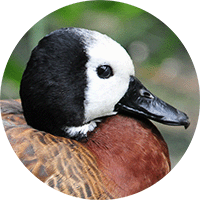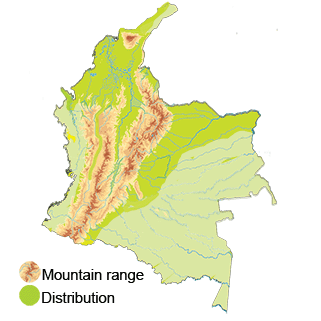White-faced Whistling-duck
Appearance: The White-faced Whistling duck measures 46 cm (18 inches). It has a white face. In flight wings are dark. It has a long grey bill, a long head and legs. It has a black neck and head, and a distinctive white face that gives it its name, though the amount of white color visible has regional variations among the species. The back and wings are dark brown to black, and the underparts are black with a fine white barring on the flanks. The neck is chestnut. Males and females have similar plumage. Juveniles are similar in color to the adults but juveniles have less contrast in the color pattern of the head.
Habitat:
Breeding:
Conservation: This duck is classified as a species of "Least Concern" on the International Union for Conservation of Nature (IUCN) Red List.
Distribution
There have been occasional sightings of white-faced whistling ducks in various regions of Colombia, primarily along the northern coast and in wetland areas. These sightings suggest that the species may make occasional flights to Colombia from its primary range in Africa, potentially due to vagrant individuals being swept off course during migration.However, it important to note that the white-faced whistling duck is not considered a resident or breeding species in Colombia. Its presence in the country is considered irregular and uncommon. For birdwatchers and ornithologists in Colombia, spotting a white-faced whistling duck would be regarded as a rare and exciting occurrence.
Taxonomy
- Kingdom: Animalia
- Phylum: Chordata
- Class: Aves (Birds)
- Order: Anseriformes (Waterfowl)
- Family: Anatidae (Ducks, geese, and swans)
- Subfamily: Dendrocygninae (Whistling ducks)
- Genus: Dendrocygna
- Species: Dendrocygna viduata
Vocalization
Whistling Calls: The white-faced whistling duck produces a series of high-pitched, melodious whistles that give it its name. These whistling calls are typically soft and flute-like in tone, often described as a "wee-oo" or "wee-ee-oo" sound. The calls can vary in pitch and intensity, and they are often repeated in a rhythmic pattern.
Contact Calls: White-faced whistling ducks also use contact calls to stay in touch with their flock or mate. These calls are typically short, sharp, and repetitive, resembling a rapid series of "click-clack" or "tik-tik" sounds. Contact calls help individuals maintain group cohesion and coordinate their movements.
Alarm Calls: When white-faced whistling ducks perceive a potential threat or danger, they emit loud and rapid honking calls. These alarm calls are designed to alert other members of the flock about the presence of a predator or disturbance, and they can vary in intensity depending on the perceived level of threat.







